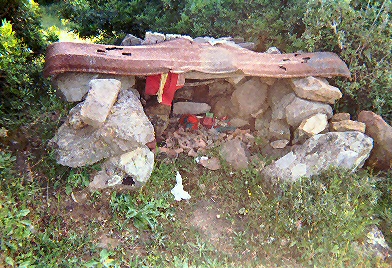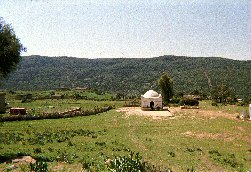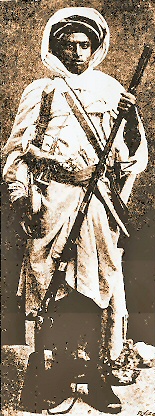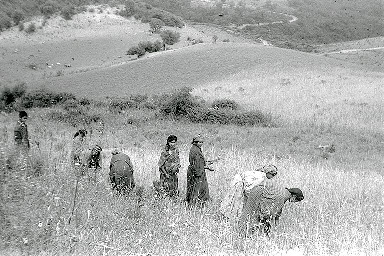return
to: Shikanda portal | Topicalities page | Ancient
Models of thought |
bibliography Wim van Binsbergen
with clickable links to most of his publications
THIS WEBPAGE. In the
context of his anthropological research training at the Amsterdam
University, the Netherlands, Wim van Binsbergen lived in the
village of Sidi Mhammad, between
the towns of 'Ain Draham and Tabarka, in the region of Khumiriyya
(N.W. Tunisia, North Africa) in 1968. Here, under the tutelage of
the resourceful and indefatigable research assistant Hasnauwi bin
Tahar, and under the competent academic supervision of Douwe
Jongmans, Klaas van der Veen, Marielou Creyghton and Pieter van
Dijk, the basis was laid, both for Wim vanBinsbergen's career as
an anthropologist and intercultural philosopher, and for his
life-long love for popular Islam, the Mediterranean, and Arabic.
The years 1967-1971
were devoted virtually full-time to this project (preparation,
fieldwork, data analysis and writing up). It was with the
explicit promise that this research would qualify for a PhD with
Amsterdam University, that Wim van Binsbergen left the
Netherlands to join the University of Zambia in 1971. However,
the treacherous fortunes of academic patronage soon forced him to
relinguish Mediterranean and Islamic studies, and to henceforth
concentrate on sub-Saharan Africa. And it was only in 1979, some
years after acting (1975-77) in the Leiden chair of African
anthropology, and a few months before his Simon Professorship in
Manchester, that (on the strength of what was to become his book Religious
change in Zambia -- Kegan Paul 1981) he was
to obtain a doctorate, -- from the Free University Amsterdam
instead of Amsterdam University, and from a different supervisor
(Matthew Schoffeleers, with Terence Ranger as external examiner;
cum laude).
Whilst thus
constituting the one major disappointment of his early career,
the North African experience had been extremely rich and
formative. All the themes of Wim van Binsbergen's later work were
to be found here (explore the following hyperlinks as a guide to
some of his work):
- the handling of complex forms of
socio-political organisation;
- the fascination
with the central question of the social sciences, notably
the relationship between individual and society, and the
realisation that one of the most profound and lasting
answers to this question has been provided by Emile Durkheim's theory
of religion. For Durkheim (1912), religion is a
system of arbitrary symbols, hinging on the
distinction between sacred and profane, through which society
invites the individual to worship, and submit to, the
social -- at all levels of segmentary socio-religious
organisation in Khumiriyya, shrines and their invisible
saints appeared to do just that; sociological and
philosophical reflection on Durkheim has remained a major
line in Wim van Binsbergen's work
- the names of
Khumiri saints, as well as their characteristic
attributes, highlight elements in traditional local
nature: specific tree, birds, and other animal species --
with aetiological myths explaining the link; this initiated Wim van Binsbergen's
interest in animal symbolism, which much later was to
become a major line in his work
- the insistence on creating history where
before there was none;
- the reliance therefore on oral sources;
- the study of myth, since
that is what oral sources primarily contain;
- the reclaiming of
a women-centred, dominant cultural domain submerged in
the West since the Bronze Age (cf. his book Tears
of Rain, Kegan Paul 1992);
- the life-long
fascination with ecstatic cults;
- the desire to
understand what moves certain people to become religious
specialists and religious leaders, and the rejection of
the deprivation thesis
in this connection. According to a theory en
vogue in the 1950-70s, many people
-- e.g. women, youth, the poor, immigrants, and outcasts
-- seek specialism and leadership in the religious domain
in order to compensate for such power and prestige as was
denied them in the secular sphere). Wim van Binsbergen's
painstaking quantitative analysis of the recruitment
pattern of the ecstatic specialists (fuqra)
that, in 1968, made up over 20% of the Khumiri adult male
village population, established beyond doubt that, at
least in that ethnographic setting, deprivation was not
an issue, and instead faqirship
turned out to be hereditary in the (patrilineally
submerged) female line. Here lies the beginning
of a life-long quest to understand what brings people to
become prophets, healers, diviners and priest -- in order to join their ranks, and
to subsequently, auto-critically, explore the
philosophical and intercultural implications and
limitations of such a move.
- the shift, especially in
this connection, from scholarly distance to ritual
participation and ecstacy;
- the struggle with the
complacent objectification on which much of the
anthropological discipline has been predicated; for although initially
Wim van Binsbergen's Khumiri research was strongly
orientated towards objectification even quantification,
his one book so far on Khumiriyya, the Dutch novel Een buik openen (In de Knipscheer 1987,
400 pp. -- 99% faithful to the ethnographic situation)
testifies to his early rebellion against the objectifying
stance; the book was dedicated to his eldest daughter
Nezjma named after a Khumiri informant;
- the reflection on the
validity of transcultural knowledge production, especially in the
Mediterranean context (where the problem was most cogently
posed in the Black Athena discussion initiated by Martin
Bernal)
- and finally, without a
background in popular Islam and in Arabic, he could never
have realised that the roots of the divination system to
which he was initiated in Botswana in 1988 (as well as
the roots of West African Ifa, for that matter) were to
be found in Islamic magic -- in
 'ilm ar-raml ('Sand science') as
developed in Southern Mesopotamia in the late 1st
millennium of the Common Era -- and he would never have
started on the long-range explorations of symbolism,
myth, magic and religion that, from 1990 onward, were to
dominate his empirical research
'ilm ar-raml ('Sand science') as
developed in Southern Mesopotamia in the late 1st
millennium of the Common Era -- and he would never have
started on the long-range explorations of symbolism,
myth, magic and religion that, from 1990 onward, were to
dominate his empirical research
Needless to add that
ever since 1968, Wim van Binsbergen and his successive families
have faithfully observed the cult of the saint Sidi Mhammad,
dedicating meals of kouskous
and hallal meat to
this Saint, occasionally sending incense, candles and a flag to
His shrine -- and frequently imploring His assistance, not in
vain. In 1970, dressed in an Ukhmiri malahfa dress, Haniya mart'
Wim entered the shrine of Sidi Mhammad al-Wilda and, in
acccordance with the time-honoured rite, opened her belt there so
that the Saint's baraka could enter and strengthen the child,
Najma/Nezjma bint Wim, that had already announced its presence
there; so Nezjma is strictly speaking a child of Sidi Mhammad,
like all inhabitants of the village surrounding the shrine
happily claim to be.
Yet, inevitably, as
that marriage came to an end, and as Wim van Binsbergen for many
years exclusively manifested himself as a sub-Saharan Africanist,
the Khumiri experience found only rarely expression in his
published scholarly and literary work. It is only now, almost
forty years later, that his two-volume book on Khumiri
shrine cults and social organisation is
finally being completed.
In the process, old and
new materials (as well as sweet memories, nostalgia, and
bitterness) are cropping up that will be shared (often after
substantial revamping) through the medium of this webpage. The
webpage already contains a considerable number of Wim van
Binsbergen published and unpublished texts on Khumiriyya, and
more will be added in the near future.

Meanwhile, the world of
Khumiriyya has profoundly changed. The teenage girls seen
harvasting in the background photograph along with their mothers,
are now grandmothers themselves -- but their voices and
inimitably graceful gestures (for which Berber women are famous)
have remained much as remembered. The face of Islam -- both in
that region, and in the world at large -- has changed almost
beyond recognition. Yet (as a short field trip in 2002 revealed
-- a first revisit after 1979) largely the same descent groups
still inhabit the valley of Sidi Mhammad; the many ancient
shrines are still there and are still being venerated; and by and
large, what in the late 1960s was an eroded landscape and a
destitute population, has seen a remarkable change for the
better. As is the fate of all of us, from throbbing life the
subject of research has faded into history -- but since a strong
historical component has been part of the project from the very
beginning, this is no great loss.
(c) 2006 Wim van
Binsbergen
From this index page
the following papers may be accessed:
| |
|
| |
van
Binsbergen, W.M.J., 1968, 'Sociale ongelijkheid en
stratificatie in het bergland van Noordwest Tunesië',
seminar paper, seminar 'Social stratification' (Professer
J.F. Boissevain), Anthropological Sociological Centrre,
Amsterdam University, December 1968 |
| |
van
Binsbergen, W.M.J., 1970, ‘Verwantschap en
territorialiteit in de Sociale structuur van het Bergland
van Noord-West Tunesie’, doctoraalscriptie,
Universiteit van Amsterdam, 1970, vii + 173 pp.,
typescript; no digital text available -- publication of a
greatly reworked English version imminent |
| |
van Binsbergen, W.M.J.,
1971, ‘Saints of the Atlas: Ernest Gellner’, Cahiers
de Arts et Traditions populaires,
4, 1971, pp. 203-211 |
| |
van
Binsbergen, W.M.J., 1971, ‘Religie en samenleving:
Een studie over het bergland van N.W. Tunesië’,
doctoraalscriptie, Universiteit van Amsterdam, 1971 ix +
326 pp., limited mimeograph edition, Part I (Inleidend;
De Kroumirse samenleving; Beschrijving van religieuze
voorstellingen en activiteiten in de Kroumirie; pp.
i-151); Part II (Sociaal-structurele en historische
achtergronden; De Kroumirse religie als cultureel
systeem; Conclusie; Verantwoording; pp. 152-326) click
here for a very short English summary -- publication of a
greatly reworked English version is imminent
|
| |
van
Binsbergen, W.M.J., 1971, ‘Muziek en dans in het
Atlasgebergte’, Muziek en
Volkenkunde, Jan.-May 1971, no.
109-113, published in two parts: click here for part I -- click here for part II ; the same text was
published as: van Binsbergen, W.M.J.,
1971b, ‘Muziek en dans in het Atlasgebergte’, Dansbalans,
maart 1971, pp. 2-5. |
| |
van Binsbergen, W.M.J.,
1970, 'Segmentatie, verwantschap en teritorialiteit in de
sociale structuur van het bergland van N.W. Tunesie',
seminar paper, Anthropological Sociological Centre,
Amsterdam University, 27 October 1970, 28 pp.,
mimeographed. click here for a revised
English version: van Binsbergen, W.M.J., 'Segmentation,
spatiality and unilineal descent: Social organisation in
the highlands of north-western Tunisia'
|
| |
van Binsbergen, W.M.J.,
1971, ‘Extase en het Westen’, Dansbalans,
Oct. 1971: 30-34 click
here for very provisional,
unpublished French version: Wim M.J., n.d., 'L'extase et
l'Occident: A propos de Khaznadar, et de Duvigneau's
Chebika'.
|
| |
van Binsbergen, Wim M.J.
, 1971, 'The impact of territoriality and kinship upon an
Ego-centred interaction system in the highlands of N.W.
Tunisia: Methodology, statistics and results', MS paper,
Department of Sociology and Development Studies,
University of Zambia; click here for PDF |
| |
van
Binsbergen, W.M.J., 1976, ‘Shrines, Cults and
Society in North and Central Africa: A Comparative
Analysis’, paper read at the Association of Social
Anthropologists of Great .Britain and the Commonwealth
(ASA), Manchester, mimeo. |
| |
click here for a photo
essay on popular Islam in the valley of Sidi Mhammad,
Khumiriyya, Tunisia (you will leave this
webpage and must use the Back button of your Internet
browser to return to this page) |
| |
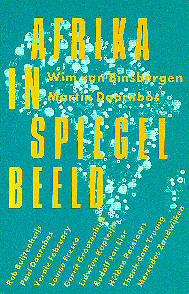 |
Van Binsbergen,
W.M.J., 1987, ‘Eerste veldwerk: Tunesie
1968’, in: Van Binsbergen, W.M.J., &
M.R. Doornbos, 1987, eds, Afrika
in spiegelbeeld, Haarlem: In
de Knipscheer, pp. 21-55; in addition to
this original Dutch version, click here for
an English HTML version; and click here
for the final English version included as chapter 1:
'First fieldwork (Tunisia 1968)', in: van Binsbergen,
W.M.J., Intercultural
encounters: African and anthropological lessons
towards a philosophy of interculturality,
Berlin/Muenster: LIT (you will leave
this webpage and must use the Back button of your
Internet browser to return to this page) |
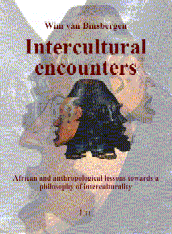 |
|
| |
Van
Binsbergen, W.M.J., 1980, ‘Popular and formal Islam,
and supralocal relations: The highlands of northwestern
Tunisia, 1800-1970’, Middle
Eastern Studies (London), 16, 1:
71-91 : click here for PDF (this website;
document must be rotated before reading) ; and click here for
HTML(you will leave this webpage and must use the Back
button of your Internet browser to return to this page) |
| |
Van
Binsbergen, W.M.J., 1985, ‘The cult of saints in
north-western Tunisia: An analysis of contemporary
pilgrimage structures’, in: E. Gellner, ed, Islamic
dilemmas: Reformers, nationalists and industrialization:
The southern shore of the Mediterranean,
Berlin/New York/Amsterdam: Mouton, 1985, pp. 199-239 PDF (this website; not
yet implemented) | HTML(you will leave this
webpage and must use the Back button of your Internet
browser to return to this page)
|
| |
Van Binsbergen, W.M.J.,
1985, ‘The historical interpretation of myth in the
context of popular Islam’, in:Van Binsbergen,
W.M.J., & J.M. Schoffeleers, 1985, eds, Theoretical
explorations in African religion,
London/Boston: Kegan Paul International, pp. 189-224; revised version of: Van
Binsbergen, W.M.J., 1980c, ‘Interpreting the myth of
Sidi Mhammed: Oral history in the highlands of
North-Western Tunesia’, in: K. Brown & M.
Roberts, eds, Using Oral Sources:
Vansina and Beyond, special issue, Social
Analysis (Adelaide), 1, 4: 51-73.
Revised version of 1980 (you will leave this webpage and
must use the Back button of your Internet browser to
return to this page) |
| |
|
| |
|
| |
Wim van
Binsbergen, Wim M.J., 1969, 'Religie in de samenleving
van noord-west Tunesië: 1. Uitgangspunten en conclusies; 2.
Beknopte etnografische gegevens', syllabus bij een
voordracht voor het dinsdagmiddag-werkcollege, 2 december
1969, 15.30 uur, Antropologisch Sociologisch Centrum,
Universiteit van Amsterdam |
| |
Through
the supervision of his PhD student Stephanus Djunatan,
Wim van Binsbergen has been involved, since the mid-200s,
in the study of a shrine cult in West Java. Click here
for an extensive report (2010) on pilgrimage structures
in that part of South East Asia, and its parallels with
the Khumiri situation |
| |
Wim van
Binsbergen, 1969 / 2020, Complete genealogies
(reconstructed) for the inhabitants (1968) of the
villages of Sidi Mhammad and Mayziya, homdat 'Atatfa,
'Ain Draham, Tunisia (view with
browser at 200%+) |
| |
Wim van Binsbergen,
2022, Bibliographic materials towards
updating my 1967-1971 study of Religion and
social organisation in north-western Tunisia, Volume I:
Kinship, spatiality, and segmentation, Volume II: Cults
of the land, and Islam, Papers on
Intercultural Philosophy / Transcontinental Comparative
Studies, Hoofddorp: Shikanda (click for PDF, 453 pp. ) |
| |
|
return
to: Shikanda portal | Topicalities page | Ancient
Models of thought
bibliography Wim van Binsbergen
with clickable links to most of his publications
| |
|
|
The
illustrations in the heading of this webpage:
- The
background photograph shows a women's work group
(mainly drawn from the family of chief Hillal bin
Hassuna), from the village of Sidi Mhammad,
harvesting rye near the shrine of Bu Qasbaya
al-Kabir, late spring 1968;
- the same
illustration repeated in the original black and
white, bottom left of the page head;
- top centre
left: the shrine (mzara)
of the neighbourhood of Qa'a Raml, village of
Sidi Mhammad, late spring 2003 -- the fresh pious
gifts show that the cult is still alive and
kicking -- note the car bumper which has come to
replace cork plates as the shrine's traditional
roofing;
- top centre
right: the domed shrines (qubba) of Sidi Mhammad
al-Wilda (the Son) in the village of Sidi
Mhammad, late spring 2002 -- note how the
excessive erosion of 1968 is no longer in
evidence, due to the local villagers' decades of
reafforestation efforts, in the context of the
Tunisian state's unemployment relief work -- the
photo is slightly misleading in that it just
keeps out of view the extensive Qur'anic school
complex which external, formal Islamic interests
have erected just twenty meters north of the
shrine of Sidi Mhammad, in the mid-1970s;
- right: a
Khumiri warrior, photographed (no doubt under
carefully arranged near-studio conditions( by
Garrigues c. 1880, and reproduced in Bertholon,
L., & Chantre, E., 1913, Recherches
anthropologiques dans la Berbérie orientale,
Tripolitaine, Tunisie, Algérie, 2 vols., Lyon:
Rey -- a colonial anthropological study on
Tunisia.
|
| |
|
|
 |
last update: 11-08-2022 17:36:32
